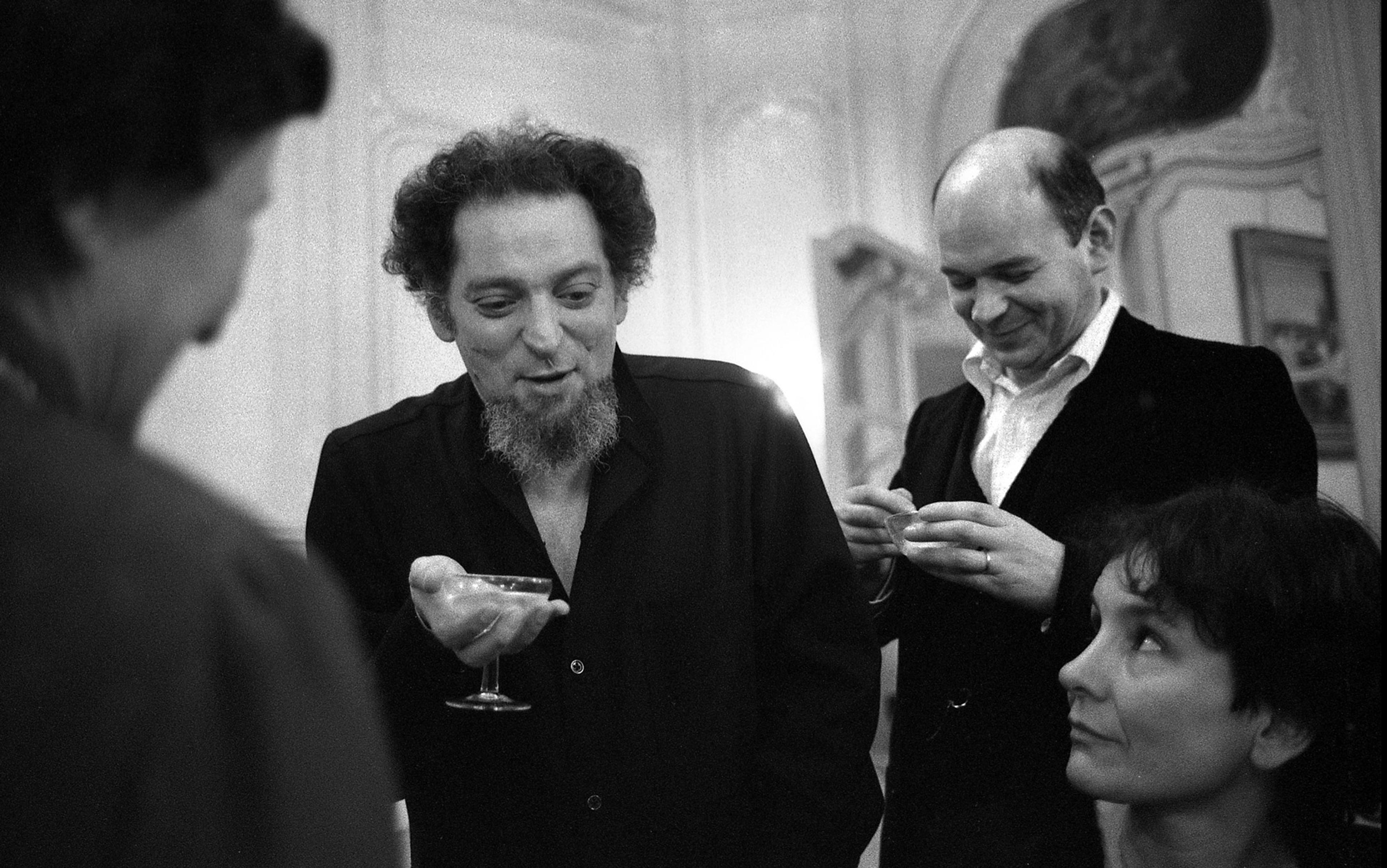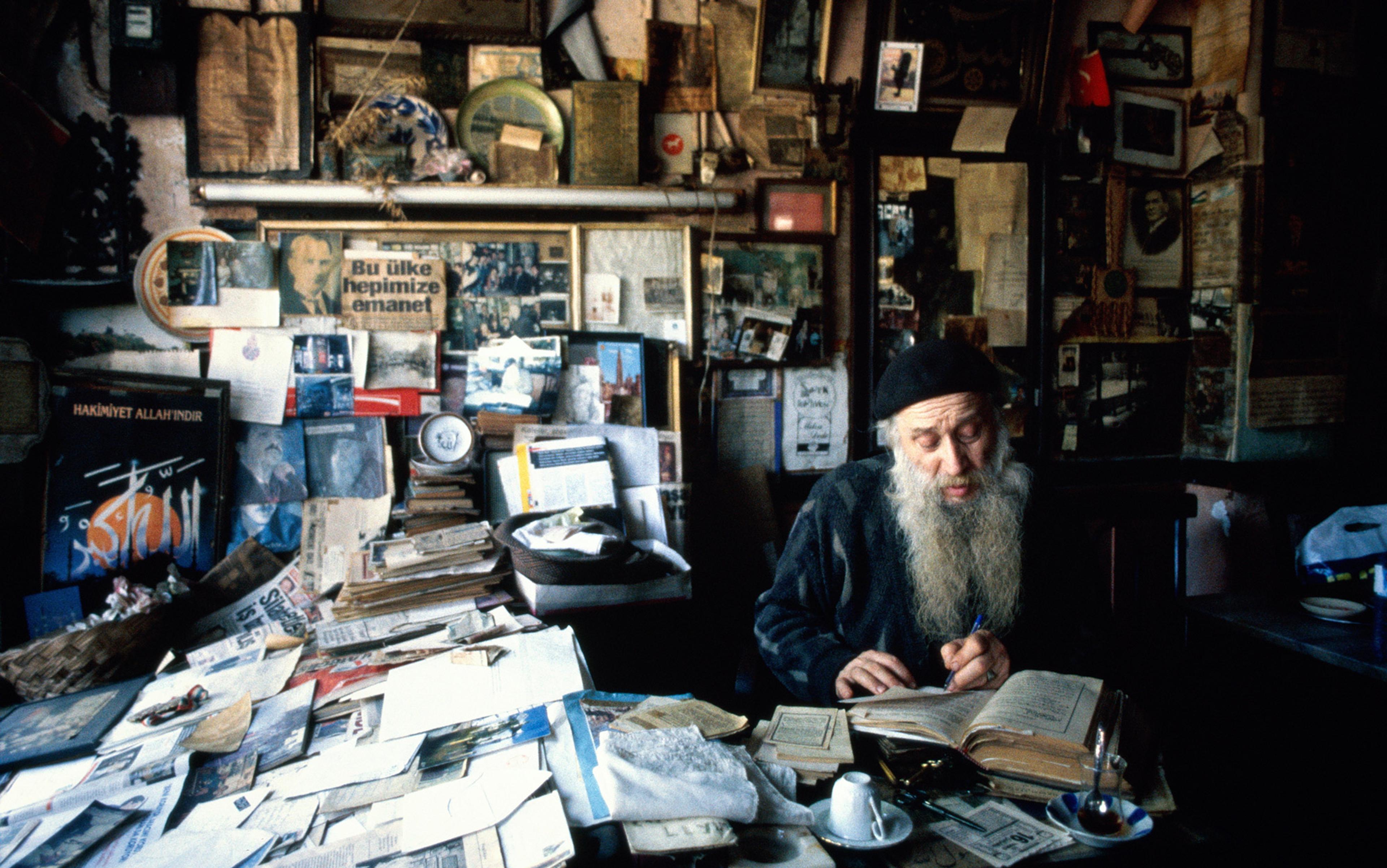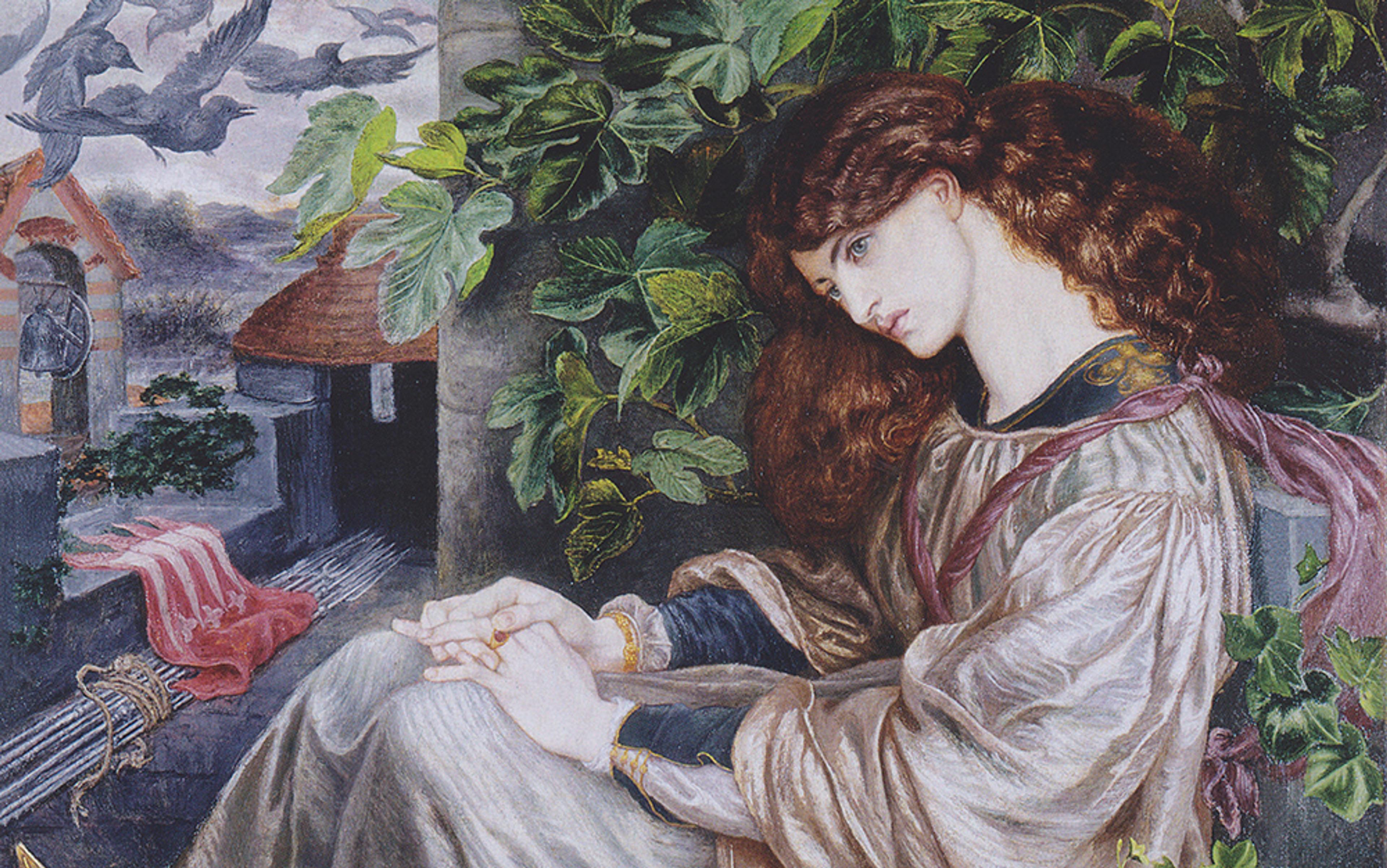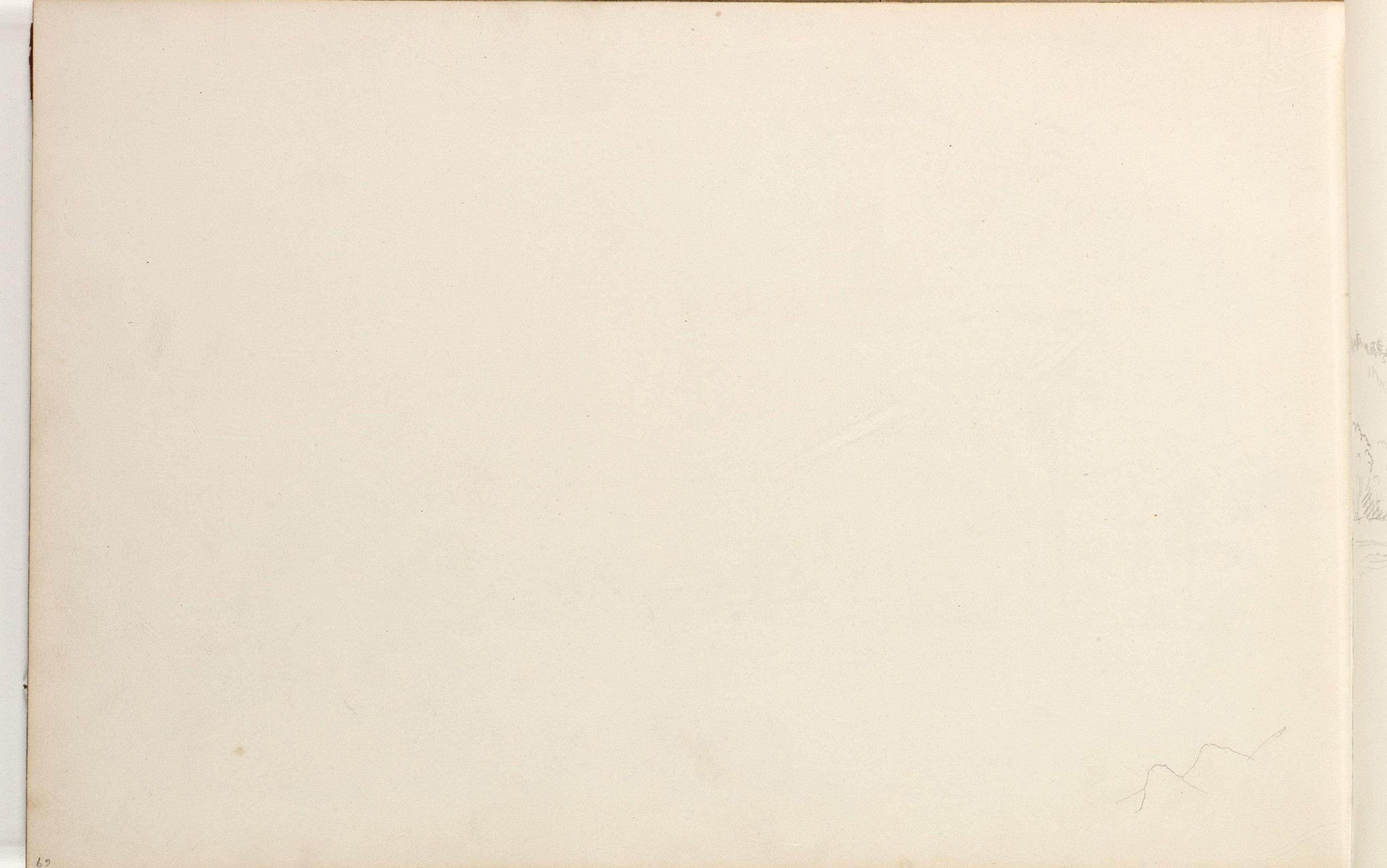Some 40 years ago, like many of my fellow undergraduates, I read One Hundred Years of Solitude (1967) by Gabriel García Márquez. While plenty of my recollections of the novel have sadly faded since then, one remains indelible: the feeling of disorientation, of complete immersion in the book’s atmosphere, that lasted for nearly half an hour after I’d turned the final page. It was García Márquez I had been reading, of course, but more immediately, it was the English words, rhythms and sonorities of his translator, Gregory Rabassa. Even had I been able to appreciate the original Spanish, I didn’t need to compare the two to know that what Rabassa had created was indisputably right.
What makes a translation ‘good’ or ‘bad’? The question has been with us since saints Jerome and Augustine first wrangled over the most orthodox way to render the Bible – with Augustine pushing for obeisance to the canon, and Jerome striving for ‘the grace of something well said’ – and despite centuries of scholarship since then, we are no closer to a definitive answer. In the age of Google Translate and artificial intelligence, we might even be tempted to abandon the question altogether, and let our smartphones do the talking.
Indeed, there is something to be said for the speed and impartiality with which computers can process certain translations, whether we’re enlisting Google’s help to buy aspirin in Seoul or spitting out foreign-language drafts of a multinational contract. Moreover, as the need for global communication grows by proverbial leaps, the efficiency of machine-based translation starts looking rather attractive. In this regard, a ‘good’ translation might simply be one that conveys the requisite bytes of information in the shortest time.
But translation is about more than data transmission, and its success is not always easy to quantify. This becomes particularly true in the literary sphere: concerned with delivering artistic effect more than facts simple and straight, literary translation by its very nature taxes our attempts to apply objective criteria. Not that there has been any lack of trying, from the 15th-century treatise De interpretatione recta (‘The Right Way to Translate’) by the Florentine historian Leonardo Bruni, to The Way to Translate Well from One Language into Another (1540) by the French printer and scholar Etienne Dolet, who was later executed for practising what he preached, to any number of translators and commentators – John Dryden, Alexander Fraser Tytler, Dante Gabriel Rossetti, Matthew Arnold, Friedrich Schleiermacher, Walter Benjamin, so many others – eager to set us on the correct path, no two of which seem to head in quite the same direction.
We might think that the very indeterminacy of literary translation would earn it more leeway, or more acceptance, but not so. From book reviewers who parse the minutiae of translations for defects, to theorists who evoke ‘assessment models’ such as those by Juliane House (1977, revised 2015) and J C Sager (1989), with their stern categories and sub-categories of error-types, the ultimate message seems to be that no translation is ‘perfect’ – which any reader already knows instinctively. Some commentators, of course, have lavished high, and often well-deserved, praise on certain translations and translators, but many relegate the translation of literary works to somewhere between grudgingly tolerated and openly disdained. Authors rail against translation’s failures to conserve their rhymes and rhetoric. Critics tar its practitioners as hacks and traitors (traduttore, traditore). Academics produce tome after tome detailing its impossibility. Even translation’s own have long dismissed it as at best a poor cousin: the 16th-century scholar and translator Thomas Wilson denigrated his own work as ‘Cheate bread’; George Eliot, who translated Baruch Spinoza and Ludwig Feuerbach, asserted that ‘a good translator is infinitely below the man who produces good original works’; and Vladimir Nabokov derided the practice flat-out as ‘profanation of the dead’. Little wonder that translation is often politely brushed, when not rudely kicked, under the rug – or that the pursuit of excellence in this context can appear so quixotic.
Furthering this attitude is a tenacious prejudice in favour of the original, or ‘source’, as undisputed master in the text-translation duo. Though for centuries the line between the two was often blurred – the Romans freely appropriated Greek oratory for their own speeches, while authors such as Geoffrey Chaucer and William Shakespeare incorporated huge chunks of foreign-born narratives into their compositions – in modern times, the distinction has been guarded fiercely, even belligerently, as in Eliot’s comment above. Even many sophisticated readers view translation as no more than a stopgap, and many feel that to read an author in translation is not really to read her at all.
Let’s be honest: it would be disingenuous to claim that the reader of a translation is truly experiencing, in all its aspects, the foreign-language work it represents, or that in reading any text transposed from one language into another there isn’t a degree of difference (which is not the same as loss). The heart of the matter lies in whether we conceive of a translation as a practical outcome, with qualities of its own that complement or even enhance the original, or as an unattainable ideal, whose best chance for relative legitimacy is to trace that original as closely as possible.
The dichotomy is almost as old as translation itself. At the turn of the first millennium, the lyric poet Horace was already enjoining translators ‘not [to] seek to render word for word’, while five centuries later the Roman statesman and philosopher Boethius took the opposite tack, arguing for the ‘uncorrupted truth’ of a strictly literal rendering. Over time, proponents of both camps have produced carefully reasoned, eloquently argued treatises to support their positions. Dryden, one of the best-known of these, recommended that a translator who ‘would write with any force or spirit of an original must never dwell on the words of his author’, but rather ‘ought to possess himself entirely and perfectly comprehend the genius and sense of his author’.
Think of translation as a dynamic process, a privileged form of reading that can illuminate the original
In indirect rebuttal, the 19th-century critic R H Horne dismissed any attempt to ‘give the spirit of the author’ as ‘a mere cover for [the translator’s] individual egotism and vanity’. Still today, advocates of ‘foreignisation’ propose denaturing the conventions of the target language to replicate those of the source – ‘deviating enough’, as Lawrence Venuti, one of its most outspoken champions, puts it in The Translator’s Invisibility (1995), ‘from native norms to stage an alien reading experience’. By these lights, a good translation would be one that intentionally strips away any illusion that the text at hand was not born in very distant climes. At the same time, such a position begs an important question: if readers of the original do not experience their encounter with the text as ‘alien’, how does it serve the text when that condition is artificially imposed on readers of the translation?
If we consider the translator the ‘servant’ of the source text, charged with forging as close an equivalent as possible, then any deviation from the original syntax or structure, whether born of egotism, incompetence or cultural prejudice, will indeed seem a betrayal. If instead we take translators as artists in their own right, in partnership with (rather than servitude to) their source authors; if we think of translation as a dynamic process, a privileged form of reading that can illuminate the original and transfer its energy into a new context, then the act of representing a literary work in another language and culture becomes something altogether more meaningful. It provides a new way of looking at a text, and through that text, a world. In the best of cases, it allows for the emergence of an entirely new literary work, at once dependent on and independent of the one that prompted it – a work that neither subserviently follows the original nor competes with it, but rather that adds something of worth and of its own to the sum total of global literatures. This does not mean taking undue liberties with the original; rather, it means honouring that original by marshalling all of one’s talent and all of one’s inventiveness to render it felicitously in another language.
To present a work as aptly as possible, to recreate it in all its beauty and ugliness, grandeur and pettiness, takes sensitivity, empathy, flexibility, knowledge, attention, caring and tact. And, perhaps most of all, it takes respect for one’s own work, the belief that one’s translation is worth judging on its own merits (or flaws), and that, if done well, it can stand shoulder to shoulder with the original that inspired it.
How does this play out on the page? Here are several attempts at an answer from various translators over the course of the past century. What these excerpts show more than anything is that the criteria of ‘successful’ are subjective (and as such, that I personally tend to favour, and find greater fidelity in, Jeromite latitude over Augustinian adherence), and that, despite centuries of treatises, there is no simple answer.
No doubt one of the most enduringly controversial of modern translators is Ezra Pound, praised for the exquisite poetry of his renderings, damned for the outrageous licence he would often take. Pound’s anthology of classical Chinese poetry, Cathay (1915), is a go-to case study of a translation based on no particular knowledge of the source language (Pound cribbed from literal renditions by the scholar Ernest Fenollosa), which at the same time manages to be more convincing than versions produced by fluent readers of Chinese – to the point where some scholars feel that Pound’s intuitive phrasings are actually more accurate.
This was no isolated case, for Pound took similar liberties with texts he could read in the original, such as Arthur Rimbaud’s ‘Au Cabaret-Vert’ (1870). Here’s a stanza of the poem in Wallace Fowlie’s studiously correct English:
For a week my boots had been torn
By the pebbles on the roads. I was getting into Charleroi.
– At the Cabaret-Vert: I asked for bread
And butter, and for ham that would be half chilled …
Pound, for his part, aims instead at the tone, the devil-may-care thrill experienced by a footloose adolescent on the open road. His version is all about casualness, concision:
Wearing out my shoes, 8th day
On the bad roads, I got into Charleroi.
Bread, butter, at the Green Cabaret
And the ham half cold …
In a similar vein, Samuel Beckett, when translating a simulated ‘delirium’ from 1930 by the Surrealist poet Paul Éluard, resorted to obvious anachronism to bring out the ardour of the original:
Thou my great one whom I adore beautiful as the whole earth and in the most beautiful stars of the earth that I adore thou my great woman adored by all the powers of the stars …
Compare this with a 1965 rendering by Richard Howard, which, though more respectful of Éluard’s modernity, in comparison with Beckett sounds not nearly as passionate, oddly tone-deaf, even old-fashioned:
My great big adorable girl, beautiful as everything upon earth and in the most beautiful stars of the earth I adore, my great big girl adored by all the powers of the stars …
And one more example: Georges Perec’s novel La disparition (1969) was long considered untranslatable because it includes not a single instance of the letter e, in French as in English the most common grapheme. But in 1995, Gilbert Adair brought out his lipogrammatic translation, A Void, which boasts many adroit substitutions and adaptations, such as this familiar-sounding stanza by ‘Arthur Gordon Pym’:
’Twas upon a midnight tristful, I sat poring, wan and wistful
Through many a quaint and curious list full of my consorts slain –
I sat nodding, almost napping, till I caught a sound of tapping,
As of spirits softly rapping, rapping at my door in vain …
Difficult? No doubt – but, as shown, not insurmountably so. (Just as this paragraph, past my introduction of Adair, similarly contains no occasion of that particular sign.)
Do such exercises matter, or are they merely the pastime of pedants and word-nerds? I believe they do matter, not only because such inventiveness keeps the art of translation vibrant, but even more so because the quality of the translator’s choices has a direct bearing on our experience of the original text, as mediated by that translator, and consequently on that text’s impact and longevity in the target culture. Aware that there is no such thing as true equivalence, a good translator will nonetheless work and work and work at a sentence, a paragraph, a page, until it brings out those aspects deemed indispensable and makes them resonate with readers from an entirely different context and linguistic system. And as the examples above show, this often means loosening the strictures of literalness in order to arrive at a deeper, more meaningful representation.
Of course, it’s not all about linguistic legerdemain, and more often than not the quality of a translation is whispered rather than shouted. Regardless of genre, regardless of whether it requires flights of fancy or solid grounding, a good translation is one that neither calls too much attention to itself (by inappropriate flamboyance, by awkwardness, by misrepresentation) nor, at the same time, denies its own personality so as to lie inert on the page. This can be a tough tightrope to walk. The French novelist Patrick Modiano, whom I’ve translated extensively, is known for the (at least apparent) simple, straightforward tenor of his prose. Reproducing that simplicity in English, that ease, is exacting work – just as I would wager that, in French, Modiano’s supposedly effortless style in fact costs him quite a lot of effort.
But more than this: when I try to convey the fluidity of Modiano’s prose in fluid and readable English, it does not obscure the fact that his writing reflects a fundamentally non-Anglophone sensibility, or that his characters are interacting with their surroundings in ways that an American or English reader, even an expatriate one, would not. To my mind, this otherness is a key element of Modiano’s work, and making it readily accessible to readers of my own tongue does not, should not, in any way negate it.
Translation navigates between making the strange familiar and the familiar strange
At its best, translation exposes us to minds and voices able to stir in us a particular sense of delight or kernel of insight, a shiver of discovery that would be available nowhere else – minds and voices that are truly unique, that have something to say that is dissimilar from what anyone else has to say, in any language. Such minds and voices are exceedingly rare, and we cannot afford to be ignorant of a single one of them. They are the reason that humans have hungered after stories since consciousness began. We are as enriched by having come in contact with them as we are unwittingly impoverished by having forgone or been denied that contact.
For this reason, translation is often cited as a preventative against cultural atrophy and homogenisation. If done well, the translation of a foreign work is uniquely positioned to usher in viewpoints different from what we see at home and make them resonate in another context, giving them a new and vibrant voice that they would not otherwise have had. What this means, somewhat paradoxically, is that translation in the best of cases not only bridges distances but, even more so, safeguards them – not by keeping cultures at a safe remove, but rather by helping ensure that the contact produces sparks rather than suffocation.
In our increasingly interconnected world, it is tempting to posit the end of national and cultural boundaries. But there’s another aspect to it, and it has to do not with the repressive aspect of boundaries but with their utility, for boundaries can also be guardians of difference. The flip side of heightened familiarity, of potentially infinite contact (including, of course, the kind of contact made possible by translation), is the erosion of diversity. Just as the notion of barriers can call to mind a vast gulag of barbed wire, so their absence can as easily conjure an endlessly uniform expanse. The diffusion of ideas, the intellectual and aesthetic free-for-all of arts, literatures, philosophies and viewpoints ricocheting throughout the world, could bring one of the greatest revitalisations in the history of humankind, a new Renaissance. Or it could lead to the blandest global monoculture we’ve ever known.
Translation navigates between making the strange familiar and the familiar strange. It couches another’s cultural expressions and assumptions in a form that we can understand, identify with, enter into. At the same time, it maintains its distance from too great an assimilation of those expressions and assumptions, so as not to homogenise the experience of the foreign. I don’t mean by replicating alien syntax and linguistic structures; I mean by respecting and preserving the inherent foreignness of the source author, while also respecting and preserving the pleasure of the original text: the same pleasure that is enjoyed by the source reader, and that the translator, in turn, owes to the target reader.
What makes a good translation? There is no one-size-fits-all answer but, among partial responses, I’d offer these: a good translation opens new doors and offers new vistas. It gets cultures talking to each other, while maintaining the vital distinctions that make those conversations worth having in the first place. It elicits a sense of singular magic and total absorption – such as I felt after reading One Hundred Years of Solitude – that grabs the reader, pulls him in, and never entirely lets go.
Sympathy for the Traitor: A Translation Manifesto (2018) by Mark Polizzoti is published via The MIT Press.






